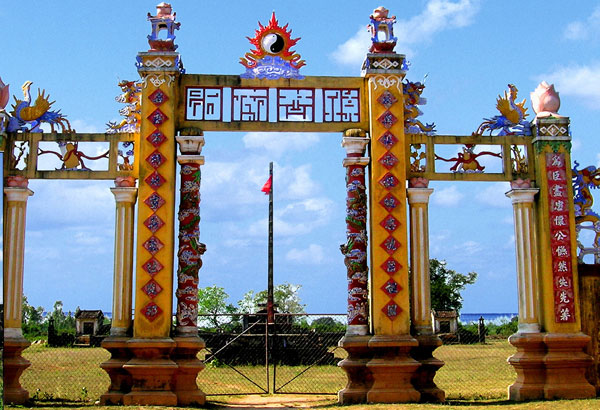Many new archaeological findings at the Emperor's Citadel
On November 23, in Quy Nhon, the Vietnam Institute of Archeology and the Department of Culture, Sports and Tourism of Binh Dinh Province organized a preliminary report on the results of archaeological excavations of the Forbidden City - The Emperor ( Tay Son Dynasty 5 times in 2012.
Initially there have been many new discoveries through archaeological excavations and research on area sizes different from previous studies. In particular, the vestige of the palace of the Tay Son Dynasty was discovered, in the area of the Forbidden City.
According to Dr. Le Dinh Phung, Head of Historical Archeology (Vietnam Institute of Archeology), this excavation was conducted from October 3 to December 3, 2012, in 5 locations (from H1-H5) on a total area of 530m 2 in the land of the Forbidden City area.
Through the excavation, it was discovered that the structure of Thuy Ho in the East and the space of the Forbidden City has a total length of 312m, width of 126m. The forbidden city is divided into 2 uneven parts, separated by a partition wall. The southern part is 174m long, 126m wide, the main door is to the south, in the heart of the ruins built during the Tay Son period such as Bat Giac Palace, Thuy Ho Lake, and Quyen Bong Palace; the buildings of the mandarins of the Tay Son Dynasty as recorded in history, along with evidence of archaeological excavations proved.

The main gate became the Emperor
Finishing the southern part is the rockery and ornamental plants still present. The northern part has a narrower area, 138m long and 126m wide in this area and remains of old bow and harem grounds. This is the living space of Nguyen Nhac's family - the king of the Dynasty then.
Distinguish between the two forbidden areas of the Citadel is the wall system that prevents traces from remaining. Based on the monument currently visible, it is possible that between these two areas is a 3-door system.
This field shows that it is consistent with the record of British merchant Champman recalling when visiting the Emperor: 'After the audience between the court, at the private meeting at the retreat . It was a palace. adoration of tiles, built in the style of Dang Trong people, supported by precious wooden columns ".
In addition, archaeologists also discovered hundreds of artifacts such as construction materials, blue stones, brick tiles, porcelain enamel of the 15-18th century China and construction materials of the Cham and Tay Son. .
According to scientists, the archaeological excavation this time has added sufficient information about the space of the Forbidden City. It is the core, nuclear space of the Emperor - the place where the activities of a Dynasty in history, although existed only for a period of 16 years (1778-1793).
The excavation results show that there is enough scientific basis for functional branches and Binh Dinh province to carry out restoration and renovation to serve the tourism development.
Emperor Emperor is located in Nhon Hau commune (An Nhon district). In 1778, Nguyen Nhac was crowned Emperor and became Emperor of the Tay Son Dynasty. This historical site has been ranked National by the State in 1984.
- Discover new archeology under Co Loa citadel
- Dead Sea scrolls and important archaeological findings in 2017
- Discovered the ancient citadel from the 4th century in Quang Nam
- Scary archaeological findings
- The site of the archaeological site of Hoang Thanh
- 10 most archeological findings (2)
- 400 new information about discovery, archaeological research
- The emperor 'loved' even her sister made Chinese history terrifying
- New archaeological findings in North Africa may
- 5 archaeological mysteries are never deciphered
- Relic area of the Imperial Citadel of Thang Long - Hanoi
- Identified the home of the panda
 Discovered an ancient centipede fossil 99 million years old
Discovered an ancient centipede fossil 99 million years old Discovered bat-like dinosaurs in China
Discovered bat-like dinosaurs in China Discovered a 200-year-old bronze cannon of the coast
Discovered a 200-year-old bronze cannon of the coast Discover 305 million-year-old spider fossils
Discover 305 million-year-old spider fossils